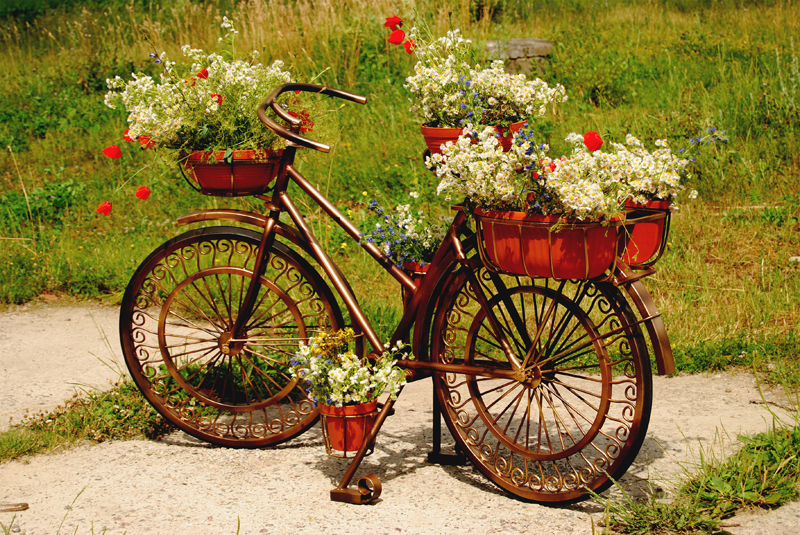Simple Sewing Kits

Homemade sewing kits to give as holiday gifts are always welcome. It is a DIY sewing project not often thought of to even make for oneself. Assembling just the right compact, portable sewing kit with just the right sewing notions can be greatly enjoyable.
Some basic sewing notions to include in a portable sewing kit are small scissors, several small size thread spools of various colors or a few different colors of thread wrapped around flat plastic bobbins (used to organize embroidery floss); wool felt piece holding several hand sewing needles, a few straight pins and safety pins; a few buttons; metal thimble and wire hoop needle threader. Measuring tape, seam ripper and a pin cushion are considerations as well.
There are an endless variety of containers to choose to enclose the sewing notions, ranging from the smallest (Altoids tins, prescription pill containers, slider type matchboxes) to sewing basketry complete with many organizing compartments and modern sewing etui. Of course the size of the container will determine what kind and size sewing notions to include.
A few sewing kit containers to consider:
Wide-mouth glass canning jar with pin cushion top – a great favorite, ideal for college student, crafter, or budding sewing enthusiast. Gather a small amount of fiber fill, fabric scrap, as well as the flat lid and the screw band that comes with the canning jar, circle of card stock, and hot glue gun and glue sticks. For pin cushion top, assemble fabric, fiber fill, screw band and flat lid pushing all tightly together. Then trim fabric edges, add a bead of glue to inside rim to secure. Cover inside of jar lid to hide fabric edges with circle of card stock cut to fit the inside of the lid and hot glue to fabric. Circle of card stock can be cut from a greeting card.
Simple fabric roll up that ties on the center sides or folded scissor pouch to sew and machine quilt can hold a few sewing notions – great for the traveler, as a charitable outreach sewing project addressing community needs, or for a Secret Santa office gift exchange. Simple parallel stitching lines or meandering stitching could be used to machine quilt the small size roll up or scissor pouch. The rollup would have a few rows of elastic tacked down at intervals on the inside to corral the sewing notions securely or include a few inside fabric pouches that close with a hook and loop type fastener.
Vintage decorated sewing tin – for those with an appreciation for nostalgia. Small wooden thread spools still wrapped with silk thread, a few antique buttons, felt needle case with hand sewing needles and pins as well as stork embroidery scissors all are reminiscent of times gone by. Depending on the size of the tin box, many sewing notions would fit.
Rigid hinged eyeglass case, Altoids tin, clear zippered pencil case or purchased potholder with pocket, pill bottles, simple batting filled square folded envelope-style, secured with pony tail holder and button will all work effectively to hold a few sewing notions.
Compact sewing basket – of a diminutive size is great to have to perch at the end of an ironing board for quick mending or easily portable for hand sewing projects while TV watching – fill with basic sewing notions including seam ripper and measuring tape.
Etui sewing box - In contemporary times, a hexagonal (usually six-sided but can be of different shapes and containers) French sewing box, covered in fabric, that opens umbrella-like exposing pockets and elastic that firmly holds sewing notions along with a pin-cushion center. When pulled closed the box sides are held together by a covering lid. Antique etui are delightful sewing treasures from the past, of a variety of shapes and were often made of sterling silver or pewter, velvet lined or of shells or ornately decorated boxes. While not necessarily simple to construct they are a charming sewing companion.
Whatever size or form the handmade sewing kit takes, petite or large, of fabric, tin, or basket, the sentiment of caring is sure to come through for the gift recipient.
Sew happy, sew inspired.
Some basic sewing notions to include in a portable sewing kit are small scissors, several small size thread spools of various colors or a few different colors of thread wrapped around flat plastic bobbins (used to organize embroidery floss); wool felt piece holding several hand sewing needles, a few straight pins and safety pins; a few buttons; metal thimble and wire hoop needle threader. Measuring tape, seam ripper and a pin cushion are considerations as well.
There are an endless variety of containers to choose to enclose the sewing notions, ranging from the smallest (Altoids tins, prescription pill containers, slider type matchboxes) to sewing basketry complete with many organizing compartments and modern sewing etui. Of course the size of the container will determine what kind and size sewing notions to include.
A few sewing kit containers to consider:
Wide-mouth glass canning jar with pin cushion top – a great favorite, ideal for college student, crafter, or budding sewing enthusiast. Gather a small amount of fiber fill, fabric scrap, as well as the flat lid and the screw band that comes with the canning jar, circle of card stock, and hot glue gun and glue sticks. For pin cushion top, assemble fabric, fiber fill, screw band and flat lid pushing all tightly together. Then trim fabric edges, add a bead of glue to inside rim to secure. Cover inside of jar lid to hide fabric edges with circle of card stock cut to fit the inside of the lid and hot glue to fabric. Circle of card stock can be cut from a greeting card.
Simple fabric roll up that ties on the center sides or folded scissor pouch to sew and machine quilt can hold a few sewing notions – great for the traveler, as a charitable outreach sewing project addressing community needs, or for a Secret Santa office gift exchange. Simple parallel stitching lines or meandering stitching could be used to machine quilt the small size roll up or scissor pouch. The rollup would have a few rows of elastic tacked down at intervals on the inside to corral the sewing notions securely or include a few inside fabric pouches that close with a hook and loop type fastener.
Vintage decorated sewing tin – for those with an appreciation for nostalgia. Small wooden thread spools still wrapped with silk thread, a few antique buttons, felt needle case with hand sewing needles and pins as well as stork embroidery scissors all are reminiscent of times gone by. Depending on the size of the tin box, many sewing notions would fit.
Rigid hinged eyeglass case, Altoids tin, clear zippered pencil case or purchased potholder with pocket, pill bottles, simple batting filled square folded envelope-style, secured with pony tail holder and button will all work effectively to hold a few sewing notions.
Compact sewing basket – of a diminutive size is great to have to perch at the end of an ironing board for quick mending or easily portable for hand sewing projects while TV watching – fill with basic sewing notions including seam ripper and measuring tape.
Etui sewing box - In contemporary times, a hexagonal (usually six-sided but can be of different shapes and containers) French sewing box, covered in fabric, that opens umbrella-like exposing pockets and elastic that firmly holds sewing notions along with a pin-cushion center. When pulled closed the box sides are held together by a covering lid. Antique etui are delightful sewing treasures from the past, of a variety of shapes and were often made of sterling silver or pewter, velvet lined or of shells or ornately decorated boxes. While not necessarily simple to construct they are a charming sewing companion.
Whatever size or form the handmade sewing kit takes, petite or large, of fabric, tin, or basket, the sentiment of caring is sure to come through for the gift recipient.
Sew happy, sew inspired.
You Should Also Read:
A Sewer's Button Box
Remembering Yuletide Traditions
Needlework Chatelaines

Related Articles
Editor's Picks Articles
Top Ten Articles
Previous Features
Site Map
Content copyright © 2023 by Cheryl Ellex. All rights reserved.
This content was written by Cheryl Ellex. If you wish to use this content in any manner, you need written permission. Contact Cheryl Ellex for details.







